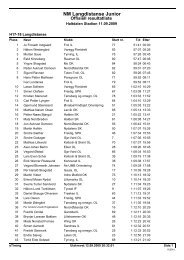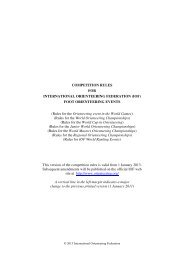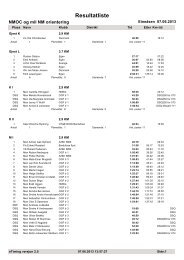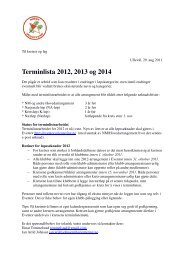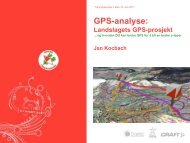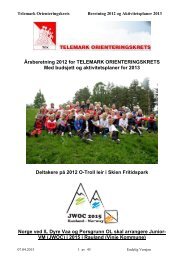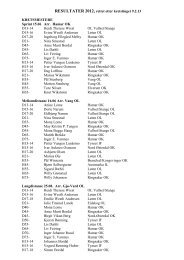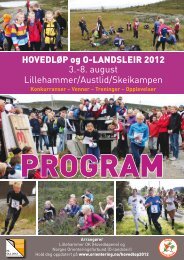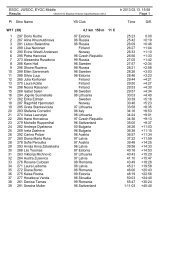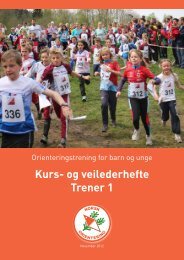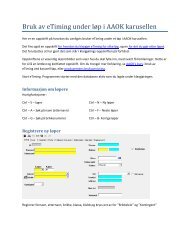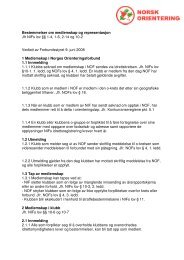International Specification for Orienteering Maps
International Specification for Orienteering Maps
International Specification for Orienteering Maps
You also want an ePaper? Increase the reach of your titles
YUMPU automatically turns print PDFs into web optimized ePapers that Google loves.
304 River305 Watercourse306 Small watercourse309 Prominent marshArea of very distinct marsh identifiable by vegetation and free water (or bare ground in dry conditions). The blacksurrounding line may be omitted.310 MarshArea of distinct marsh identified by vegetation.401 Distinct open land402 Distinct open land with scattered trees403 Distinct rough open land404 Distinct rough open land with scattered trees7.6.2 Discipline-specific symbolsTwo new symbols are introduced to indicate passability of the trails <strong>for</strong> disabled competitors.0.180.3831 Passable stepA natural or man-made step or difficult section of trail that is passable by disabledcompetitors with care and assistance. The symbol is a cross line across the trail.Colour: black.8 MAPPING GUIDELINES FOR PARK ORIENTEERING8.1 GeneralThe park orienteering discipline is still under strong development. This makes it difficult to create a fixed standard,since doing this could harm the further development. There<strong>for</strong>e the word "guidelines" has been chosen,meaning it is not to be considered as an en<strong>for</strong>cing standard, simply because map making in town and parkenvironments often needs improvisation and compromising. The "guideline" indicates a least common denominator,making sure that certain basic cartographic rules and language is maintained.8.2 Content<strong>Maps</strong> <strong>for</strong> park orienteering are based on the foot-orienteering map specification.As in traditional orienteering map making, features which are most essential <strong>for</strong> the runner in competition speedmust be selected and presented on the map. It is important to understand that the larger scale should not betaken as an excuse to "over detail" the map. The running speed is normally so high that the competitor does notobserve small details anyway.8.3 ScaleThe recommended scale is 1:5 000.8.4 Contour interval0.30.35832 Impassable stepA step or section of trail that is unlikely to be passable by disabled competitors, evenwith assistance. The symbol is a cross line across the trail.Colour: black.The recommended contour interval is 2, 2.5 or 5 m. It must be the same all over the map. Parks and towns areoften relatively flat, and the map maker should avoid "chasing" contour details. If a city base map (or similar)which often has 1 m interval, is used as base material, every second contour should be taken out in order tocreatea2mvertical interval.8.5 Printing and reproductionThese types of maps, often produced in smaller amounts of copies, are well suited <strong>for</strong> four-colour printing andcolour copying. The results are particularly good when the symbols are enlarged by 150%.Please refer also to section 3.4 Printing, in this publication.8.6 Recommended symbols8.6.1 Use of foot-o symbolsAll symbols from the basic orienteering map specification is applicable <strong>for</strong> the park orienteering map.Special detail featuresThe larger scale of park and town maps, easily invites to additional "large scale" symbols, such as light poles,benches etc. This could be of interest <strong>for</strong> educational maps such as school maps, and as mentioned initially themap maker has to have a certain degree of freedom in this respect. However <strong>for</strong> competition maps they are of3132




